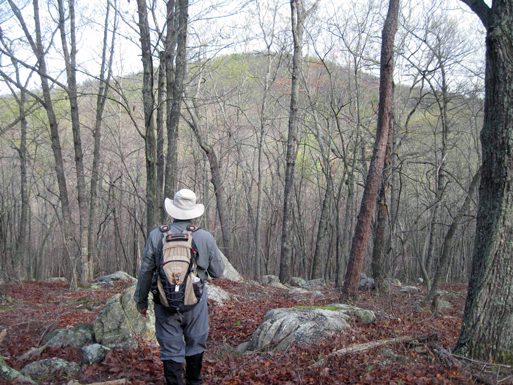Little-known fund conserves some treasured places

Where are you going this year for the Fourth of July? Hiking Western North Carolina’s Mount Mitchell, the highest peak east of the Mississippi? Camping in the Linville Gorge Wilderness Area of the Pisgah National Forest? Maybe you’ll spend the day trout fishing in the Great Smoky Mountain National Park, or drive the scenic Blue Ridge Parkway to picnic amid breathtaking mountain vistas.
If you’re drawn to the coast instead, a few hours’ drive east from the Piedmont will allow you to walk the beach and climb the lighthouse at Cape Hatteras National Seashore. History buffs might check out Fort Raleigh National Historic Site to see the first English settlements in the New World.
Or, closer to home for Piedmont residents, you might spend the day at the Badin Lake Recreation Area in the Uwharrie National Forest or take a weekend backpacking trip along the Uwharrie Trail. Maybe you and your family will simply spend time at a local county park, cooking on the grill and letting the kids play on a playground.
These and so many other places are here to enjoy because of the Land and Water Conservation Fund (LWCF). Whether you’re a hiker, hunter or history buff, you should be grateful for this federal program that has made special places like this available for public use all over the country.
This program derives its funding not from taxes, but from royalties paid by private gas companies who extract publicly owned oil and minerals from federal waters in the outer continental shelf. The program was created in 1964, with the thought that using these royalties for public parks would offset the risk to our natural resources by drilling primarily in the Gulf of Mexico. The federal government receives more than $3 billion from offshore oil leases each year, and LWCF has been authorized to receive as much as $900 million of that. Recent years, however, have seen dramatic diversions of these funds by Congress for other federal spending.
LWCF supports the acquisition of land and conservation easements to protect important game lands, national parks, trails, historic monuments, watershed protection, recreational access and vital forest land and resources. In addition, it provides funds to states for local and state parks (including swimming pools, baseball fields, and parking lots), many of them in our own neighborhoods. (Click here to find out where LWCF monies have benefited your community.)
When the program is explained to citizens, it enjoys broad support across political ideologies. (A recent poll showed 86 percent of those polled support using offshore oil royalties to provide public lands onshore.) Both of North Carolina’s U.S. senators and both Uwharrie-area members of Congress (Republican U.S. Rep. Howard Coble and Democratic U.S. Rep. Larry Kissell) have supported bills to try to keep the intended LWCF funds from being diverted to other causes. They understand public lands in North Carolina are loved by our citizens, and are an important part of our economy.
Use of our public lands is estimated to contribute $7.5 billion annually to the N.C. economy, support 95,000 jobs in the state and generate $430 million in annual state tax revenue. More than 3.4 million people participate in hunting, fishing, and wildlife watching in North Carolina, including many who bring their dollars with them from other states.
Whether you like to fish, hunt, hike, bird watch, kayak, camp, visit historic sites, play ball at local parks or just keep your state taxes lower, you benefit from the LWCF. There is no better time than Independence Day to visit a special public place made possible by LWCF and be thankful for what most Americans agree has been a wildly successful government program. You can learn more about LWCF at www.WhyWeLoveLWCF.org.
Views expressed in this commentary are those of the author and not necessarily the collective view of the UNC Charlotte Urban Institute staff or the University of North Carolina at Charlotte.